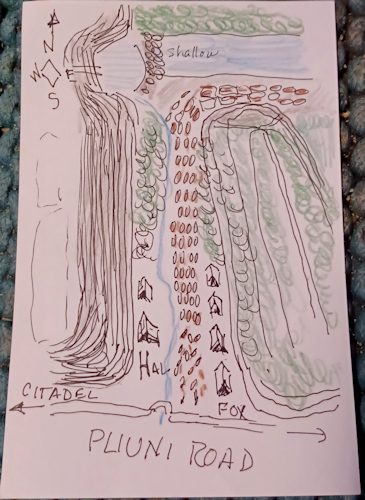Oct 27
Edged Steel, Lure Of
Posted: under Horngard, Life beyond writing.
Tags: Life beyond writing, research, weapons October 27th, 2023
Bringing Nasimir Clart into POV status as a character has led to the conclusion that I need yet another sword. A cavalry saber suited to such a man as Nasimir Clart, for instance. And paging through images of sabers (and sabres) for ones that were combat weapons, not just dueling weapons, has led me to….the 1796 pattern Light Cavalry Saber of the British Army. Which is not only a handsome, graceful blade but had the reputation as a killer, for its ability to lop off body parts, including heads. Is it “in period” if the Paksworld stories were written as 13th-14th century? No. But Paksworld isn’t this world, it has dwarves as master smiths, with advanced (compared to ours) skill in mixing metals for steel…so they *could* make the right steel for sabers of that size and type in Paks’s day, allowing light cavalry a weapon superior to anything in the “real” (our-world) late medieval period.
Clart’s company is not exactly 18rh-early 19th c. light cavalry, either. But it has some of the same uses: scouting, communication, covering troop movements, harassment of enemy troops, hit-and-run attacks. It’s highly mobile, flexible, in ways a heavy-armored cavalry isn’t. The company deploys both lancers and swords, mostly this type of saber. And…I’ve never held this kind, just the modern ‘fencing” saber. Not the same animal at all, a house-cat to a tiger. In the area of “replica” swords, most sabers have been duds–the opinion of experts far more knowledgeable than me. However, there are late 18th, early 19th c. sabers that “looked right” for Nasimir Clart (who sat in my head, saying “Maybe, too thin, maybe, too curved, NEVER, and YES!”) Yes to the very popular 1796 pattern British Light Cavalry Saber. Which has now, according to several experts, been reproduced accurately in all respects after using an actual antique, not pictures, for the model.
Before the final version of the combats I’ve written Clart into, in the new books, I expect to have my own replica saber in hand, to feel how it moves in the hand, what it ‘does’ to wrist, elbow, shoulder, and back in use, and thus (if needed) improve the way I wrote the scenes. There will be vegetable parts on the ground. For those interested in what this saber–as an antique and as a replica–looks like I suggest looking up Schola Gladiatoria on You Tube, one of my favorite channels (along with Tod’s Workshop). Or you can search for British Saber 1796 and see a lot of images of various versions of it.
And though Museum Replicas is out of stock with it right now, in the future some fine day I expect to find a package from them with my very own saber in it.
Meanwhile, Clart Company’s first cohort, with its commander and junior captain of the first, have made it out of the foothills and onto the plain, while the second cohort and its junior captain, are spending another few days back in camp at Horngard, while their lightly wounded recover more, and the second in command (senior captain of the second) who was seriously wounded either stabilizes or dies in Fox Company’s medical tent nearby. Golden Company is awaiting the arrival of an expected Andressat contingent with the Count in attendance and some gifts for the king, and in between, a trade caravan will show up unexpectedly. Everyone’s avoiding the Pliuni road becaause Pliuni is in bad odor thanks to its behavior in Horngard I.

